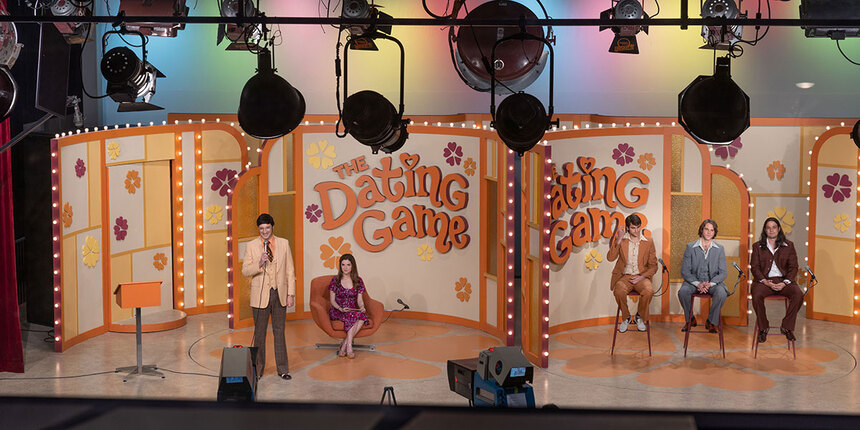Toronto 2023 Review: WOMAN OF THE HOUR, Going Head-to-Head with a Killer
Anna Kendrick Directs & Stars in the Tale of Killers and Consequences

Women are not believed. This has been true for decades (if not centuries) and it has allowed men to perpetrate terrible crimes, almost in plain sight, without remorse or consequences. I realise this is something of a blanket statement (yes, I know it is not all men). But it is enough men, that even when we do scream (literally or figuratively) at the top of our lungs, too often nothing is done to prevent further violence.
We're also aware of the expectations upon us to behave certain ways both in private and public, and how that puts us in grave danger. Anna Kendrick's directorial debut Woman of the Hour melds these two threads together in a true crime story. Anyone with access to Netflix or podcasts is aware of the huge popularity of such stories, from Ted Bundy to Jeffrey Dahlmer to Mind Hunters to even something that pokes fun at the subgenre, Only Murders in the Building. The public's fascination especially with serial killers begins to feel perhaps a little gruesome.
Kendrick is very intuned to how women must navigate any space they occupy, being under the constant watch of eyes that judge their every movement, no matter how innocuous, in order that they may take control, and place the blame on women when needed. Woman of the Hour is perhaps more successful in how Kendrick unpacks this part of the story, than the true life crimes it's showcasing.
Set in the 1970s, Woman of the Hour jumps between various points in time — when serial killer Rodney Alcala was finding women alone and maybe lonely, drawing them in with his alleged charm, and then murdering them, often brutally — to the year he appeared on the popular television show The Dating Game. Kendrick plays Cheryl, who is trying to find her break as an actress in Los Angeles. She ended up on the show with Alcala, and selected him as her bachelor.
Even though this is the 1970s, it's not hard to recognize the signs given both subtlely and far more overtly to women about what's expected of them. In an audition, two men talk openly about Cheryl with her in the room, and it's suggested more than once that she might get ahead if she was willing to dress a certain way or do nudity. A male neighbour and friend either doesn't pick up in her body language and hesitancy to understand that he's not wanted - or just doesn't care, since he should be able to get what he wants. Alcohol and a low mood mean Cheryl makes a poor decision, though thankfully not a dangerous one.
The film excels during the main scenes set during the taping of the game show - here, Cheryl is facing not only the scrutiny of eyes backstage, both those more friendly doing her hair and make-up, to those less so, with the host Jim Hale (Tony Hale) reminding her that she needs to be sexy and definitely not smart. At first, Cheryl plays along, giving him what he wants - the cute, shy, pliant girl. But then, she decides that since she's never going to be on this show again, she might as well play it the way she wants, and changes the questions to ones that challenge the bachelors to treat her like a human being. Kendrick and her cast have clearly studied the real show, and understand how the constant microagressions in performance and reception means Cheryl must constantly be on her guard, even when she's taking control. Alongside this, audience member Laura (Nicolette Robinson), having recognized Rodney as the man she believes killed her friend, tries to do something - but again, especially as a black woman, she is treated as a nuisance.
Of course, Rodney (Daniel Zovatto) is the smart one, refusing to stoop to the level of the other men, and plays along, giving Cheryl the answers she wants. We're able to see both how this man could come off as charming, intelligent, and caring, but we also see what women see (and men ignore): the snake in the grass, waiting to pounce, knowing that he'll always be trusted since he is white and male, and that's all he needs to get away with murder.
The other half of the film is Rodney's murders. Jumping around in time, Kendrick showcases how long he's been killing, the effective methods he used - finding women on their own, starting off by neing charming, placing them in a situation where running away or calling out for help is useless. These scenes try to give the women something of a voice - we spend enough time with them, especially a teen runaway, to care when they are killed. But they also perhaps don't put these women enough in the context of their society, that we understand why they've made the decision to truth this man, at a time when even they should be aware that inviting a stranger into your home or following him to the desert would be a bad idea. Whereas we'ver built up that time with Cheryl, seen what she has to endure, especially in the context of being an actress trying to make it in Hollywood. These killing scenes, sadly, fall a little flatter than they should, not just because we know what will happen, but because Rodney feels a little too easy in his execution.
Woman of the Hour succeeds in showcasing the constant barrage, be the missiles large or small, of conversation and behaviour that try to force women into submission (and how it hasn't changed that much), and how easily white men are believed just because they are white men.
Woman of the Hour
Director(s)
- Anna Kendrick
Writer(s)
- Ian MacAllister McDonald
Cast
- Anna Kendrick
- Tony Hale
- Jedidiah Goodacre







